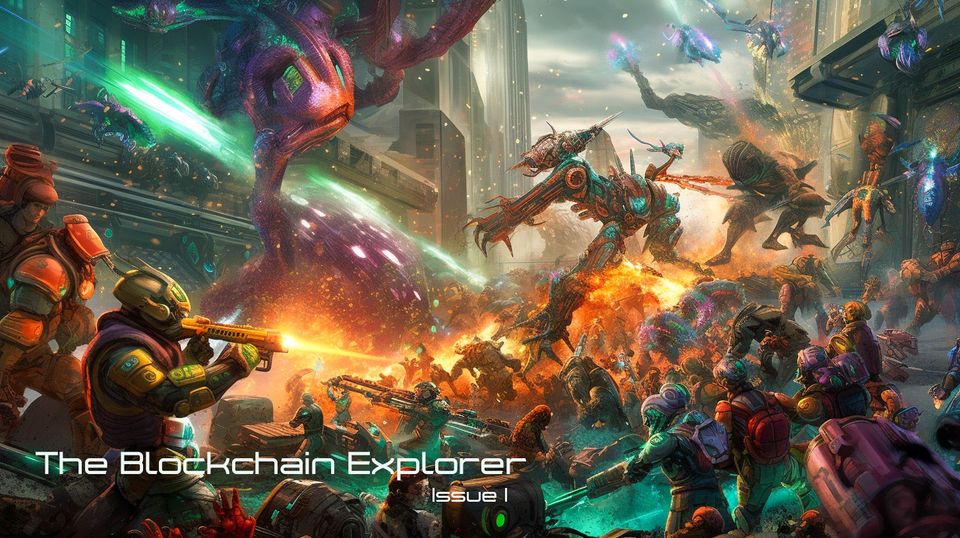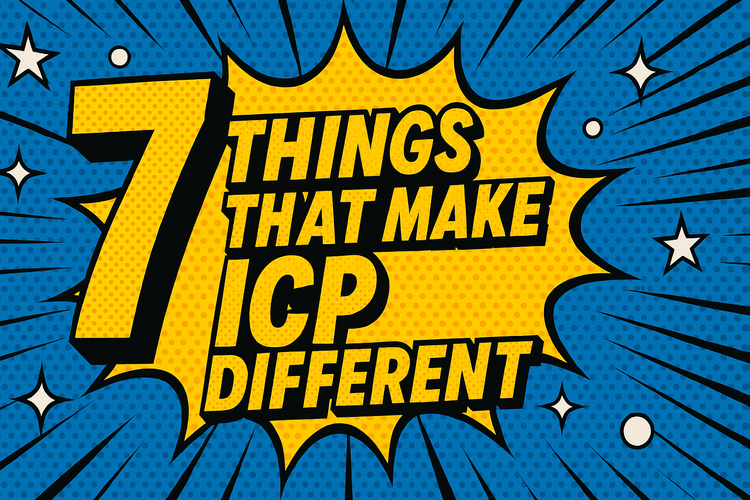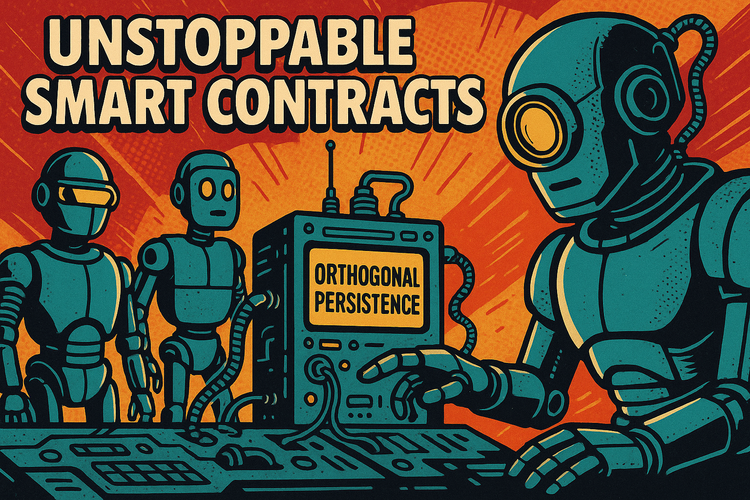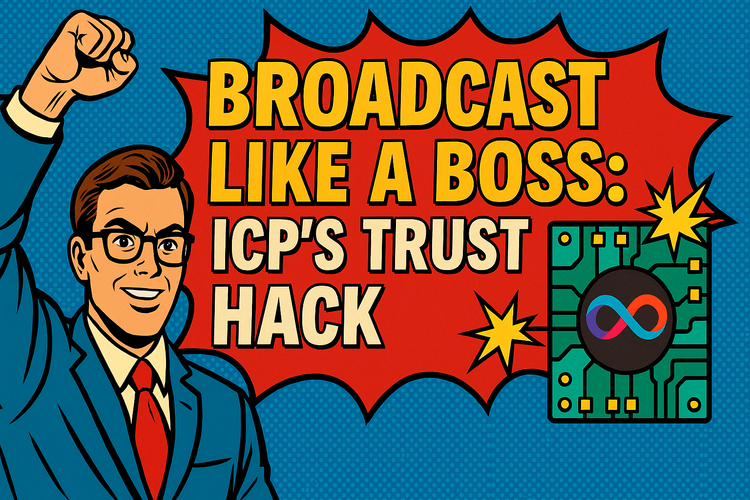The Blockchain Explorer: Popular Layer-1 Showdown

Welcome to the first edition of "The Blockchain Explorer" - your one-stop guide to the ever-evolving world of Layer 1 (L1) blockchains! This new publication aims to provide a comprehensive overview of today's different blockchains.
In this issue, we're embarking on a head-to-head comparison of some of the most notable L1 blockchains in the market today. We'll dive deep into the intricacies of Sui, Ethereum, Aptos, ICP, Solana, Polkadot, and Avalanche, comparing their core features and distinct strengths. We'll scrutinize parameters such as transaction speed, token supply, nodes and validators, energy efficiency, gas fees, and more.
Let's start with a brief overview of these L1 Blockchains.
What is SUI & APTOS Blockchain?
Sui is a Layer 1 blockchain that former Meta employees created. It is designed to be both developer and user-friendly, and it can support a wide range of application development with unrivaled speed at low cost. Sui is also built on the Move language, which was originally planned to be used for Meta's now-scrapped Diem project.
Aptos blockchain is a Layer 1 blockchain designed to be scalable, secure, and energy-efficient. It is built on the Move programming language and uses a proof-of-stake consensus algorithm. Developed by a global team of 350+ developers. Aptos' modular architecture allows for frequent upgrades, on-chain change management protocols, and the potential for horizontal throughput scalability. Aptos is also built on the Move language and is a spin-off from Meta's Diem project.
Internet Computer ( ICP) Blockchain - Decentralized Internet?
Unleashing a new paradigm in the blockchain ecosystem, the Internet Computer Protocol (ICP) stands tall with its novel approach to scalability, security, and decentralization. As a third-generation public blockchain, ICP transcends traditional limitations, fostering a limitless environment for smart contracts.
By integrating advanced features such as Chain Key Technology, Non-Interactive Distributed Key Generation, and Network Nervous System, ICP provides an avenue for building open, collaborative internet services at web speed. ICP promises a groundbreaking framework for the decentralized web, or web3, pushing the boundaries of what's possible in the blockchain universe.
Ethereum: The Uncontested OG of Smart Contracts
In the dynamic realm of blockchain technology, Ethereum unquestionably holds the title of the "Original Gangster" (OG) of smart contracts. As the pioneering platform that brought programmable transactions to the blockchain, Ethereum's innovative nature has spurred the development of thousands of decentralized applications (dApps) and revolutionized the DeFi (Decentralized Finance) sector.
Boasting a thriving ecosystem backed by an active developer community, Ethereum continues to inspire and lead with its commitment to open-source development, security, and decentralization. Despite emerging competitors, Ethereum's resilience and adaptability, evident in its transition towards Ethereum 2.0 and Proof-of-Stake (PoS), underscore its status as the stalwart foundation of smart contract technology in the blockchain world.
Solana: The High-Speed Contender in Blockchain Technology
Emerging as a powerhouse in the blockchain sphere, Solana sets a new standard with its exceptional speed and high throughput. Known for its ability to process a staggering 65,000 transactions per second, Solana has engineered a breakthrough in blockchain scalability without sacrificing decentralization or security. Its unique consensus mechanism, Proof of History (PoH), combined with the innovative architecture of Solana Cluster, allows for optimized transaction processing and data storage.
By offering fast, secure, and scalable solutions, Solana has significantly impacted the development of decentralized applications, particularly in the DeFi and NFT (Non-Fungible Token) space, making it a formidable player in the blockchain industry.
Polkadot: Bridging the Divide in the Blockchain Universe
Polkadot breaks new ground in the blockchain landscape by fostering interoperability and scalability across multiple chains. Recognized as the epitome of a multi-chain framework, Polkadot enables different blockchains to communicate and share information seamlessly, enhancing their collective potential. Its unique architecture, featuring a central Relay Chain and multiple Parachains, facilitates cross-chain transfers of any data or asset, not just tokens.
Polkadot's shared security model also allows individual chains to leverage collective security, enhancing their resilience against attacks. Polkadot is revolutionizing how diverse blockchains can collaborate to drive innovation by creating a unified and interconnected blockchain network.
Avalanche: Pioneering Scalability and Customization in Blockchain Technology
Emerging as a beacon of innovation, Avalanche is revolutionizing the blockchain arena with its unique consensus protocol and dynamic subnetworks. At its core, the Avalanche Consensus Protocol delivers robust security, faster processing speeds, and superior energy efficiency. This unprecedented protocol enables the network to reach consensus swiftly, providing sub-second finality times – a monumental leap in the blockchain sector.
In addition, Avalanche introduces the concept of customizable subnetworks, also known as subnets. These dynamic sets of validators work in unison to achieve consensus on blockchains, each with unique rules and protocols.
Unveiling Our Comparison Methodology: From Speed to Energy Efficiency
In our quest to provide an unbiased and comprehensive comparison of various Layer 1 blockchains, we've adopted a methodology that analyzes several key parameters. Below Stats were taken on May 12th 2023 .
| Sui | ICP | Solana | Ethereum | Polkadot | Avalanche | Aptos | |
|---|---|---|---|---|---|---|---|
| Token Symbol | SUI | ICP | SOL | ETH | DOT | AVAX | APT |
| Transaction speed | 23 TPS | 5,000 TPS | 4,000 TPS | 15 TPS | 1,000 TPS | 25 TPS | 10 TPS |
| Finality | 480 milliseconds | 4 seconds | 13 seconds | 5 minute | 6 seconds | 2 seconds | 1 second |
| Average block time | 0.5 seconds | 0.4 seconds | 0.4 seconds | 12 seconds | 6 seconds | 2 seconds | 0.5 seconds |
| Total Token Supply | 10 B SUI | 498,446,177 ICP | 547,396,525 SOL | 122,802,176 ETH | 1.312 B DOT | 428,181,357 AVAX | 1,034,018,251 APT |
| Token Circulating Supply | 528,273,718 SUI | 435,942,850 ICP | 395,272,636 SOL | 122,802,176 ETH | 474.748 M DOT | 325,783,775 AVAX | 191,265,108 APT |
| Node | 1,982 | 549 | 1900 | 10,329 | 1,000 | 4,500 | 100 |
| Energy Efficiency | High | High | High | Low | High | High | High |
| Number of validators | 102 | 549 | 3,356 | 567,361 | 1,000 | 1286 | 108 |
| Average Gas Fee | 0.01 SUI | 0.0001 ICP | 0.000005 SOL | 76 gwei | 0.01 Dot | 25 nAVAX | 0.001 APT |
| Programming language | Move | Motoko, RUST | Rust | Solidity | Rust | solidity | Move |
Here's a glimpse into our analytical process:
Speed: Speed is one of the most critical elements in the blockchain universe. To assess this, we delve into three primary facets - Transactions Per Second (TPS). It measures the number of transactions a blockchain can handle in one second, providing a snapshot of the network's capability.
Finality: In the context of blockchain, finality refers to the point at which a transaction or data block can no longer be changed or reversed. Once a transaction reaches finality, it's considered 'settled,' meaning it's permanently included in the blockchain. Finality is essential for ensuring the security and integrity of a blockchain network. It safeguards against double-spending and other forms of fraud. The time taken to reach finality can vary significantly between blockchains, impacting the speed at which transactions are settled. Blockchains with faster finality times can typically process transactions more quickly, offering a better user experience.
Average Block Time: The Average Block Time of a blockchain is the time it takes for the network to generate one new block. Since transactions are stored in these blocks, the block time directly influences the speed at which transactions can be processed. A shorter average block time means the blockchain can process transactions faster, resulting in faster confirmation. However, it's crucial to strike a balance because if the block time is too short, it may lead to issues like increased orphan rates and bloated blockchain size. Therefore, the Average Block Time is a crucial factor in a blockchain's overall performance and efficiency.
Tokenomics: Our analysis doesn't overlook the tokenomics – the Total Token Supply and Circulating Supply. The Total Token Supply encompasses all tokens that currently exist or will ever exist in the blockchain. Simultaneously, the Circulating Supply denotes the number of tokens available to the public. These numbers help us understand the potential market dynamics and the economic models of the respective blockchains.
Programming Language: The programming language used by a blockchain affects its functionality, security, and accessibility. By assessing the programming language(s) used, we gauge the ease of use for developers and the potential use cases the blockchain might cater to.
Energy Efficiency: As global sustainability concerns rise, we also factor in each blockchain's energy efficiency. By analyzing the consensus mechanisms and operational requirements, we can gauge each blockchain network's environmental impact and sustainability.
Gas Fees: We examine the average gas fees associated with executing transactions on each blockchain. This metric is critical for users and developers alike as it directly influences the cost of using the blockchain.
Nodes and Validators: The health and decentralization of a blockchain can often be understood by looking at its nodes and validators. Nodes are computers that maintain the network and uphold its rules. At the same time, validators are specific nodes that, under certain consensus mechanisms, have the privilege to validate transactions and add new blocks to the blockchain. More nodes and validators often signify a more robust, secure, and decentralized network.
Key Takeaways and Conclusion
Conclusion:
- ICP boasts a remarkable 5,000 TPS transaction speed, making it the fastest among the compared blockchains.
- Though Aptos and Sui have the lowest transaction speed, it offers the fastest finality time of under 1 second. They are both based on MOVE and which has its own advantages.
- As newer blockchains, Sui and Aptos exhibit lower circulating supply, about 5% in the case of Sui. Investors should be cognizant of potential price depreciation as more tokens get unlocked and join the circulating supply. An increase in supply without a corresponding rise in demand can lead to price drops.
- Solana has a significant number of nodes (1,900) and validators (3,356), contributing to network security and decentralization. It also stands out with high transaction speed (4,000 TPS +).
- Despite its lower transaction speed and longer finality time, Ethereum remains popular due to its pioneering role in enabling smart contracts. It has the highest number of nodes (10,329) among the compared blockchains, contributing to its robust network security.
- All of its total token supply of Polkadot is in circulation, which may contribute to price stability.
- Avalanche has an impressive finality of 2 seconds. It boasts a high number of nodes (4,500) as well.
In conclusion, each of these blockchains brings unique strengths to the table. While some excel in transaction speed and finality, others offer energy efficiency, security, or developer flexibility advantages.
The choice of blockchain would depend on the specific requirements of a project or use case. But by enabling interoperability, we can establish a shared ecosystem where data, value, and smart contracts flow smoothly across diverse networks. In this system, the high-speed transactions of one blockchain can be combined with the advanced security of another and the impressive scalability of yet another, all within the same interconnected space. So interoperability is not just desirable, but essential for harnessing the full potential of blockchain technology.
Please share your thoughts on the article by clicking below Emoji ...
Disclaimer
*The information and analysis provided in "The Blockchain Explorer" section are intended for educational and informational purposes only and should not be considered as financial, investment, or professional advice. While our team strives to ensure the accuracy and reliability of the content, we make no representations or warranties of any kind, express or implied, about the completeness, accuracy, reliability, suitability, or availability of the information presented.
The content within "The Blockchain Explorer" may include opinions and forward-looking statements that involve risks and uncertainties. The blockchain and cryptocurrency markets are highly volatile, and past performance is not indicative of future results. Any reliance you place on the information presented is strictly at your own risk. Before making any investment decisions, we highly recommend consulting with a qualified financial advisor or conducting your own thorough research.
By accessing and using the information provided in "The Blockchain Explorer," you acknowledge and agree that neither the authors, publishers, nor any other party involved in the creation or delivery of the content shall be held liable for any direct, indirect, incidental, consequential, or punitive damages, including but not limited to loss of profits, goodwill, or data, arising out of your use or inability to use the information provided or any actions you take based on the information contained within this section.*








